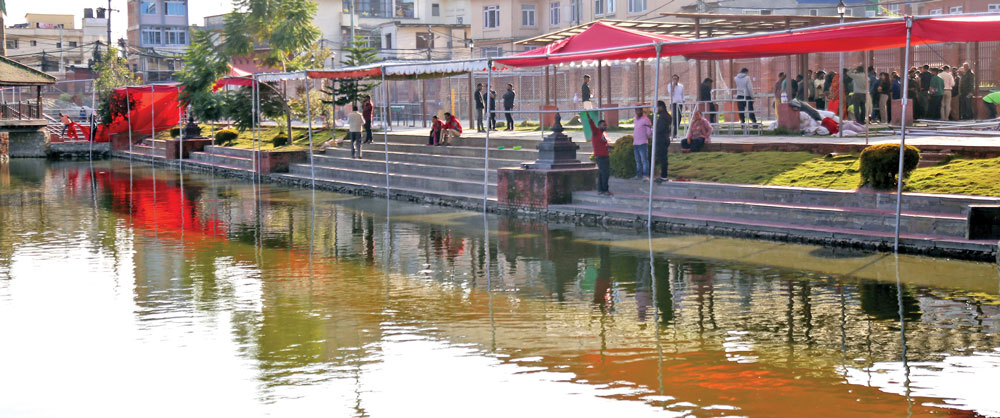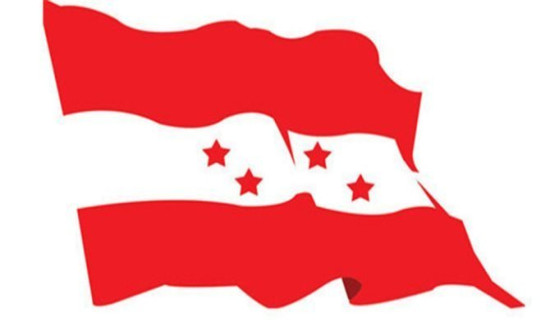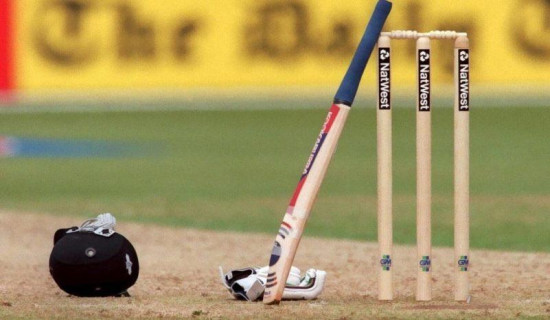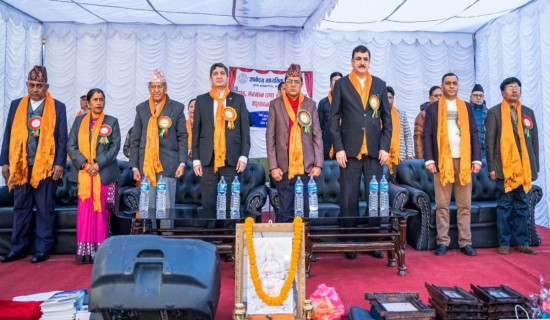- Monday, 1 December 2025
Chhath spirit sweeps eastern Madhes
BY OUR CORRESPONDENTS
Sarlahi/Mahottari, Bardibas/Rajbiraj, Oct. 26:The entire Madhes Province has become lively with preparations for Chhath. From Sarlahi to Mahottari, Bardibas to Rajbiraj, devotees, local authorities, and community groups are working tirelessly to clean ponds, decorate ghats, and set up worship sites dedicated to the Sun God.
In Sarlahi, locals have joined hands to build and clean Chhath Ghats at various locations. In Parsa Rural Municipality-1, Sangrampur, villagers and representatives collaborated to clean the Kalikasthan Phulwari Pond and construct a new Ghat. Similar efforts are seen across Haripur Municipality, where the Chitain Mahadev Temple premises received major clean-up and beautification work. Some permanent ghats, built with the support of local and provincial government funds, are being readied with tents and bamboo structures. Even areas without natural water sources are creating temporary ponds by digging and filling water pits for the festival.
In Bardibas, preparations have reached a festive pitch. Decorative gates are being erected, ponds are being beautified, and volunteers are busy setting up hundreds of Chhath Ghats. In Ward No. 14, near the Kameshwarnath Mahadev Temple, around 300 ghats are being built along the pond’s banks. Ward Chairman Vijay Mahato said that all the expenses, estimated at about Rs. 600,000 to Rs. 700,000, were being covered through local donations. A cultural event showcasing Mithila culture and the spiritual essence of Chhath is also planned. The area is expected to attract over 2,000 devotees and visitors this year.
Markets across the province are bustling with life. Stalls and town squares are filled with essential items for Chhath, including handwoven bamboo baskets (Dhaki), trays (Nanglo), small baskets (Supli), clay pots, and earthen lamps. The demand for fruits such as bananas, coconuts, sugarcane, and citrus has surged, while the sound of devotional Chhath songs like ‘Ham hu argiya debai, he Chhathi Maiya, ham na jaib dusar ghat’ fills the air, adding to the festival’s sacred atmosphere.
In Rajbiraj, women devotees have already performed the ‘Nahay-Khay’ ritual, which marks the beginning of the four-day festival. Devotee Sunita Kumari said she began her fast with a vow of self-purification and prayer to the Sun God. Manju Devi said that ‘Nahay-Khay’ involves bathing in rivers or ponds before consuming a simple meal of plain rice and bottle gourd curry. Following this ritual, devotees begin a four-day-long fast dedicated to the Sun. Local Babita Jha said that the community had come together to clean and decorate ponds and set up lighting for evening prayers.
Chhath, also called ‘Shashthi Brata’, is celebrated on the sixth day after Tihar and is one of the most significant festivals in the Mithila region. The festival is dedicated to the worship of ‘Chhathi Maiya’ and ‘Dinkar’ (the Sun God), representing gratitude for life, health, and prosperity. It begins with ‘Nahay-Khay’ on Saturday, followed by ‘Kharna’ on Sunday, worship of the setting sun on Monday, and offerings (Argha) to the rising sun on Tuesday, marking its conclusion.
The origins of Chhath trace back to ancient times. According to mythology, Queen Kunti of the Dwapar era worshipped the Sun God and was blessed with a radiant son, Karna. It is also said that Sage Atri’s wife, Sati Anusuya, observed the ‘Shashthi Brata’ for marital harmony and longevity, while even the Pandavas prayed to the Sun during their exile. Folk legends recount how a king once freed himself from a deadly disease after performing the Chhath rituals upon a Brahmin’s advice.
Beyond its mythology, Chhath carries deep social and cultural meaning. It promotes unity, nonviolence, and social harmony, transcending caste and class barriers. Materials used in worship, bamboo baskets, trays, clay lamps, and garlands, are crafted by local potters, Dom community, and Malis, symbolising equality and inclusion.
As Chhath songs echo through the villages and glowing lamps illuminate the ponds, Madhes stands united in devotion. From the early morning chants to the evening offerings of ‘Argha’ to the setting and rising sun, the festival continues to inspire faith, purity, and togetherness across the region.















